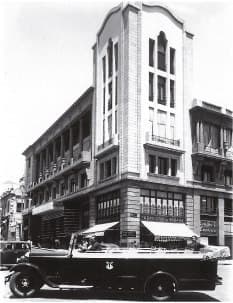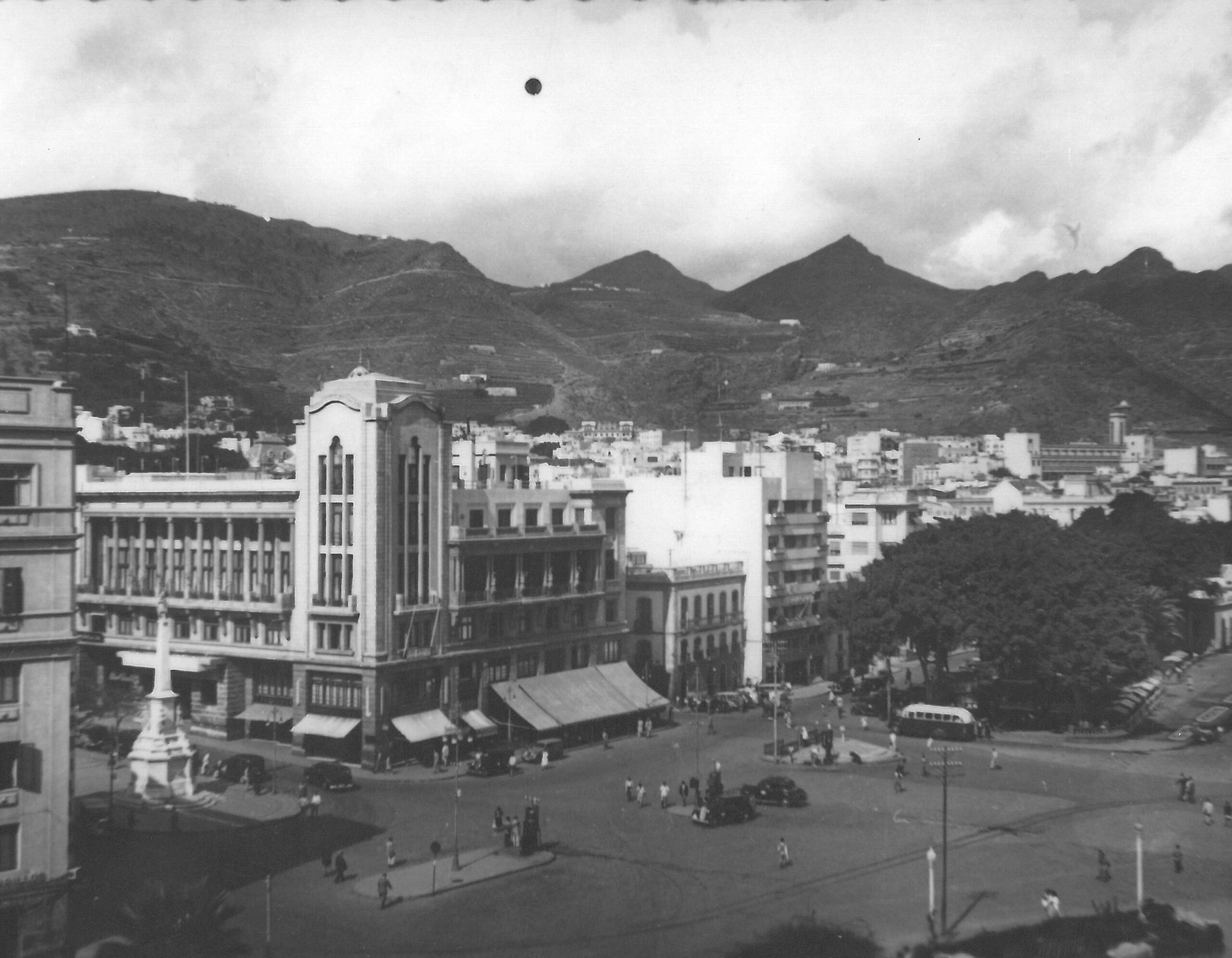Discover
Our history
A walk through the origins of the Casino de Tenerife

The Real Casino de Tenerife, founded in 1840, is the oldest cultural society in the Canary Islands.
The current building occupies the space of the old Casino of the s. XIX.
It was originally called “Gabinete de Lectura y Recreo” (Reading and Recreation Office), honoring the function for which it was created. It is the work of the architect Miguel Martín Fernández de la Torre and has been declared an Asset of Cultural Interest, as it is the greatest exponent of rationalist and art deco architecture in the Canary Islands.
It houses an art gallery with works by the greatest Canarian artists such as Néstor de la Torre, José Aguiar, González Méndez, Romero Mateos, César Manrique, Borges Salas, Martín González, Guezala, Cristino de Vera and Pedro González.
In 1840, fifty-two merchants and landowners of Santa Cruz de Tenerife founded the Centro de Lectura y Recreo, the first recreational and cultural society of this city, where its members held gatherings, read the press and literary works, or participated in games not prohibited by law.
Its first headquarters was located in a room in house number 4 of the Plaza de la Constitución, on the corner of Candelaria Street. Ten years later, they rented the house located at number 2 of this square, since it had rooms to hold dances, gatherings and rooms for reading, playing cards and billiards, and it was equipped with a piano, two telescopes and two glasses. In 1855, when the first statutes were drawn up, the Centro de Lectura y Recreo was renamed Casino de Santa Cruz de Tenerife.


The “Plaza Mayor
The chosen location could not be more strategic, in the Plaza de la Constitución, the “Plaza Mayor” of the city, meeting place and exchange of news and opinions, the square where the main civil, military, and recreational events were held, and where the most important people of the town had their homes, the main hotels and the best stores, bazaars, stores, and cafes (Atlántico, British, La Peña …).
In 1860, twenty years after the Casino was founded, when Santa Cruz had 14,000 inhabitants and had just received the title of City, its 200 members decided to rent the mezzanine of the Casa Villalba, located at number 11 of this square, although with entrance from La Marina Street, since the door leading to the square was used by the International Hotel, which occupied the upper floors of the building.
In 1895, thanks to the prosperity enjoyed by the Society, they would occupy the entire building, dedicating the mezzanine to card games and reading room, the ground floor for daily gatherings and different sports, installing in the upper part the great gala dining room and the great ballroom, where nine windows overlooked the Candelaria square.
In order to build a new building that would cover the entire block, the General Meeting of December 17, 1911, approved the purchase of houses numbers 3 and 5 on La Marina Street, and houses numbers 1 and 3 on Bethencourt Alfonso Street; but, as World War I prevented this initiative, it was necessary to wait until 1929 to begin to build the bay facing the sea and, in order to complete the work, in 1932 the old Casino building would be demolished. In addition, since 1928, the view of the sea had been completely unobstructed.
Its inauguration, held on May 4, 1935, was a social event in Tenerife, as the gala ball was attended by two thousand guests, including the island’s leading authorities.
This monumental building, with an eclectic exterior and a rationalist interior, with the two main facades facing the Candelaria and España squares, and the other two facing Bethencourt Alfonso and Callejón Peligro streets, was designed by architect Miguel Martín-Fernández de la Torre to serve as a social and commercial building, whose rents would allow the Society’s economy to remain healthy. The building was declared an Asset of Cultural Interest with the category of Historical Monument in 1982.
The entrance to the building has the significance that the Real Casino has in this city.
The Hall is presided over by a large oil on canvas, attached to the wall, by the painter José Aguiar García, entitled Allegory of the Sea and the Earth. From the Hall, of double height that allows the existence of the mezzanine, the access to the different rooms of the Company is distributed through two elevators and a great staircase of honor, of imperial layout. At the other end of the entrance, another staircase leads to the Marina Restaurant, with large windows facing the exterior of the building.
On the mezzanine floor, in addition to the Miguel Duque hall, where the reception of authorities takes place, there are also projection, billiards and bridge rooms.
The second floor consists of the large living room, with double height, overlooking the Candelaria square, Plaza de España and Bethencourt Alfonso street. It has an area of 844 square meters and capacity for 2,000 people. Its structure can be compartmentalized, so that its center forms a large multi-purpose space, where conferences, concerts, exhibitions, book presentations, cultural events, dances, etc. can be held, while the rest can be used as a restaurant, recreation room, etc. It is decorated with two large oil paintings on canvas, attached to the wall, of 90 square meters, by the painter Néstor Martín Fernández de la Torre, entitled El mar y La tierra, with scenes of agriculture and fishing in the Canary Islands.
The Royal Casino has always been open to the cultural and recreational events held in the city, so that in its premises are developed cycles of conferences, musical auditions, art exhibitions, book presentations, etc.. Its library, with more than 10,000 volumes, also has magazines, journals and newspapers, including in English.
Among the works of art that are exposed in the different dependencies, there are 39 paintings of the most representative signatures of the Canary plastic, which have been declared Good of General Interest, in the category of Movable Good, according to decree of the Government of the Canary Islands of May 16, 2006, and whose authors are Ángel Romero, César Manrique, Cristino de Vera, Diego Crosa y Costa, Francisco Bonnín Guerín, Francisco Borges Salas, Guillermo Sureda, José Aguiar García, Manuel González Méndez, Manuel López Ruiz, Manuel Martín González, Néstor Martín Fernández de la Torre, Pedro González and Teodoro Ríos.
Since 1840, the different people who have presided over the Society, with its Board of Directors and the administration and concierge staff, have ensured that the Real Casino has been the flagship of the social life of Santa Cruz Tenerife; it has always had its doors open to the illustrious people who have visited us, who have left their recognition in the Golden Book of the Entity.
For this reason, throughout its history, the Real Casino de Tenerife has been distinguished with the Gold Medal, awarded by the Government of the Canary Islands. Gold Medal of the Island, awarded by the Island Council, and Gold Medal of the City, awarded by the City Council of Santa Cruz de Santiago de Tenerife. And it has received the Royal Title, granted by Juan Carlos I, on November 12, 2009.
José Manuel Ledesma. Official Chronicler of Santa Cruz de Tenerife.
